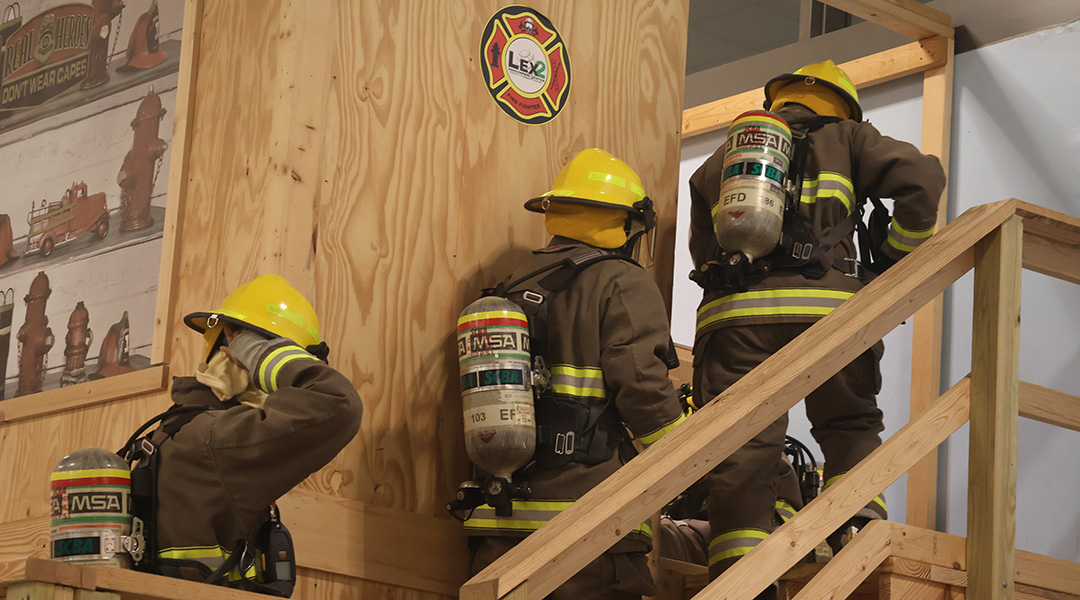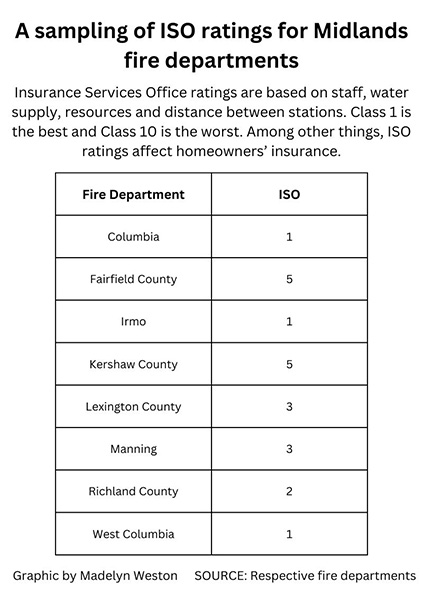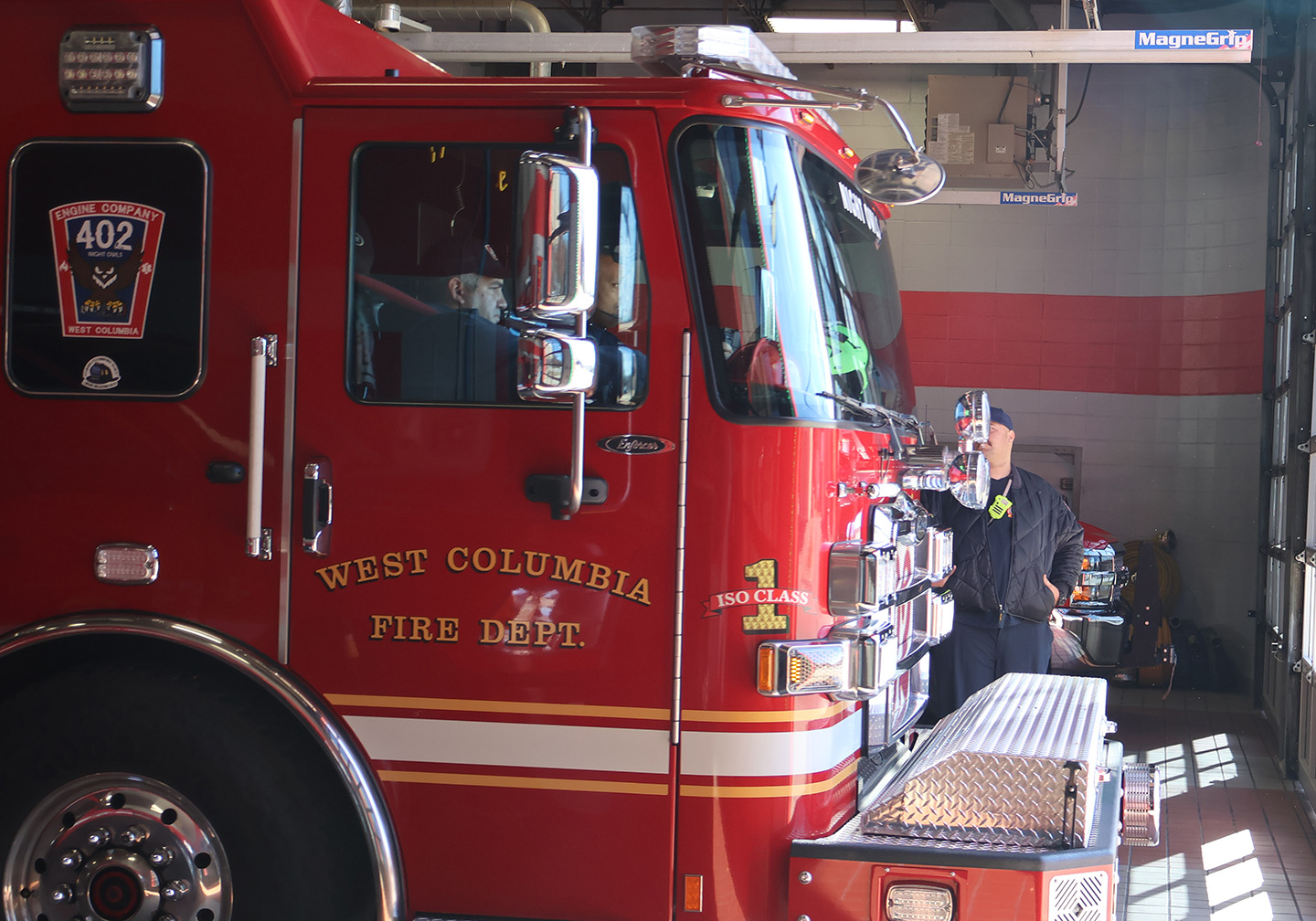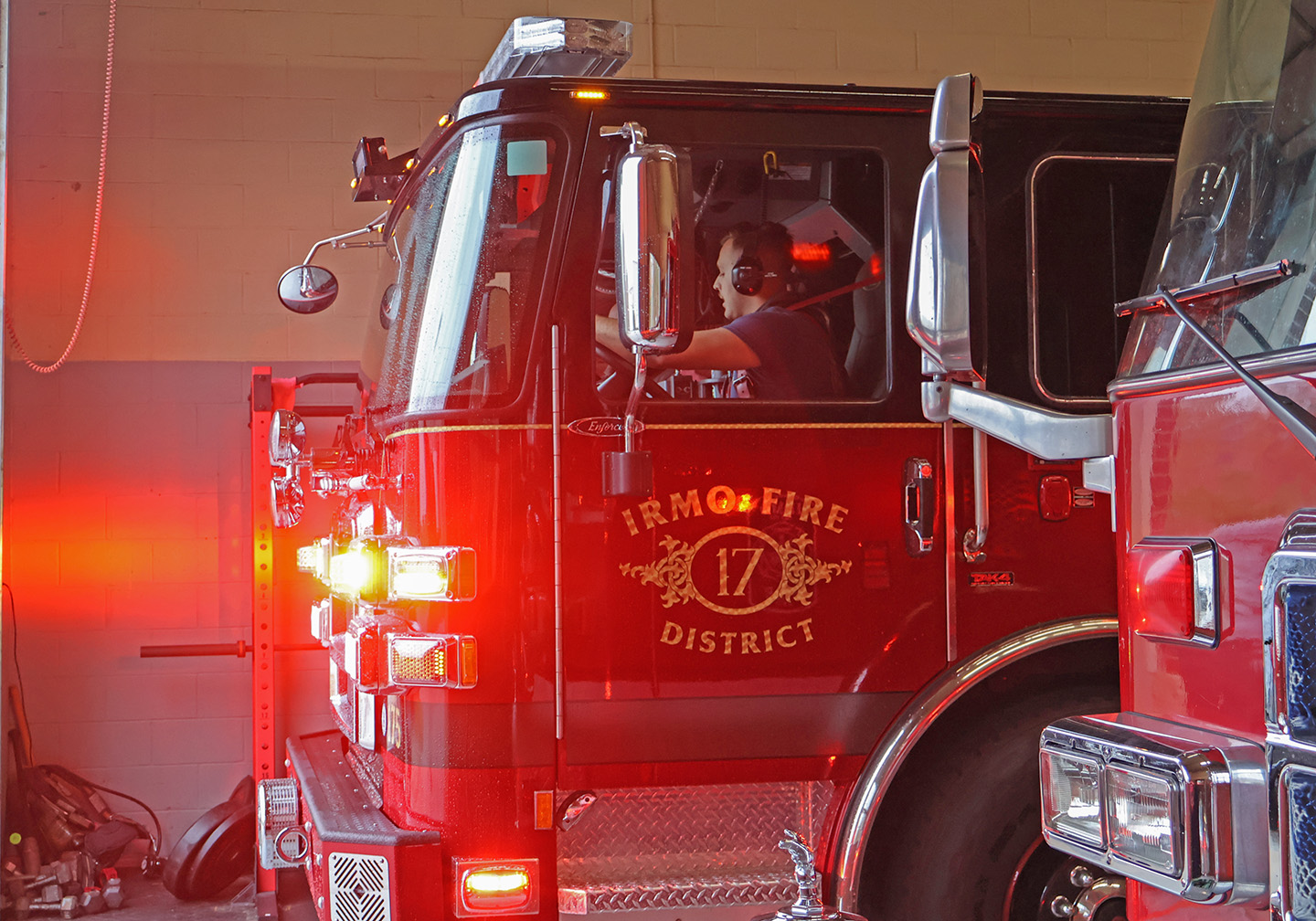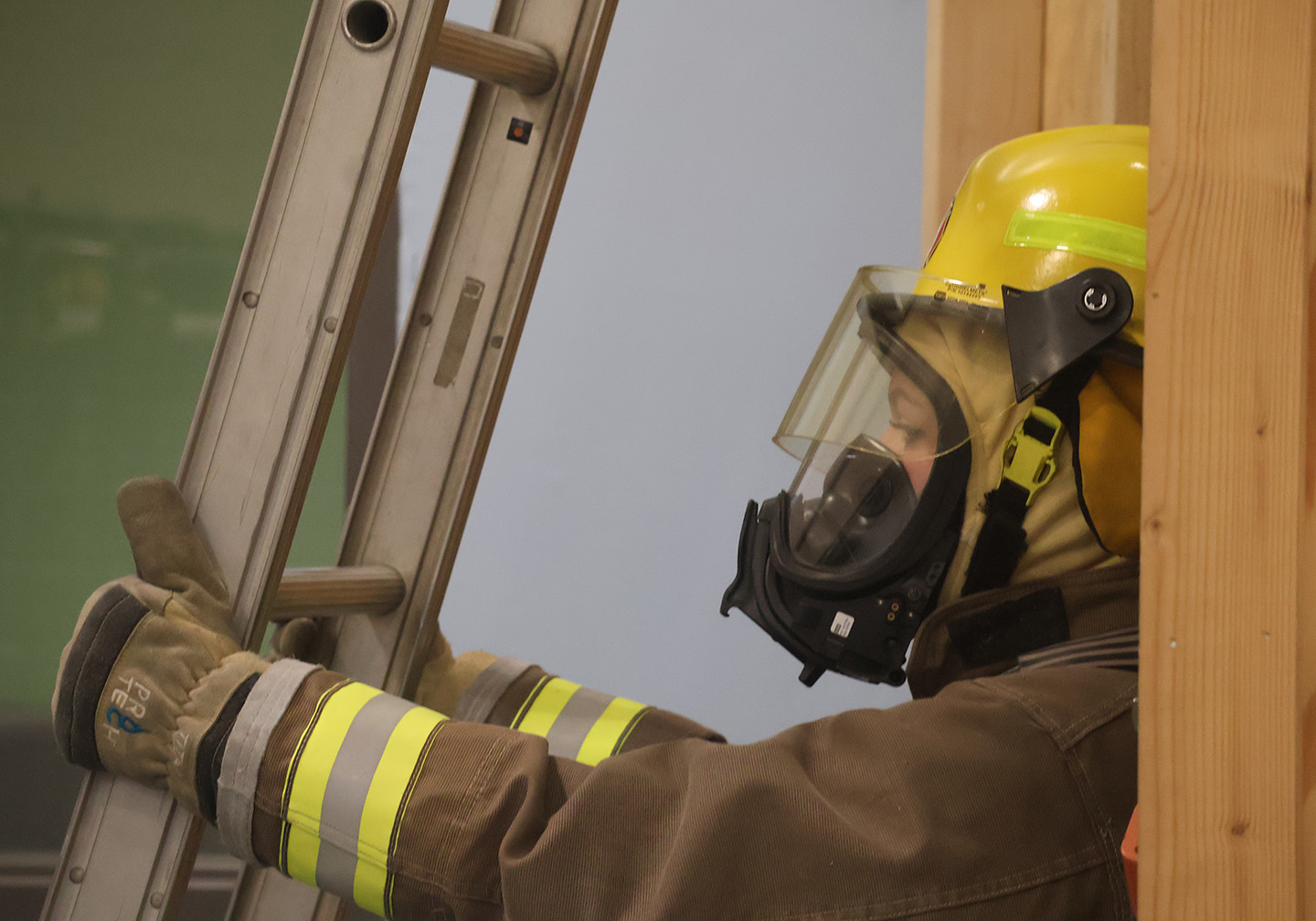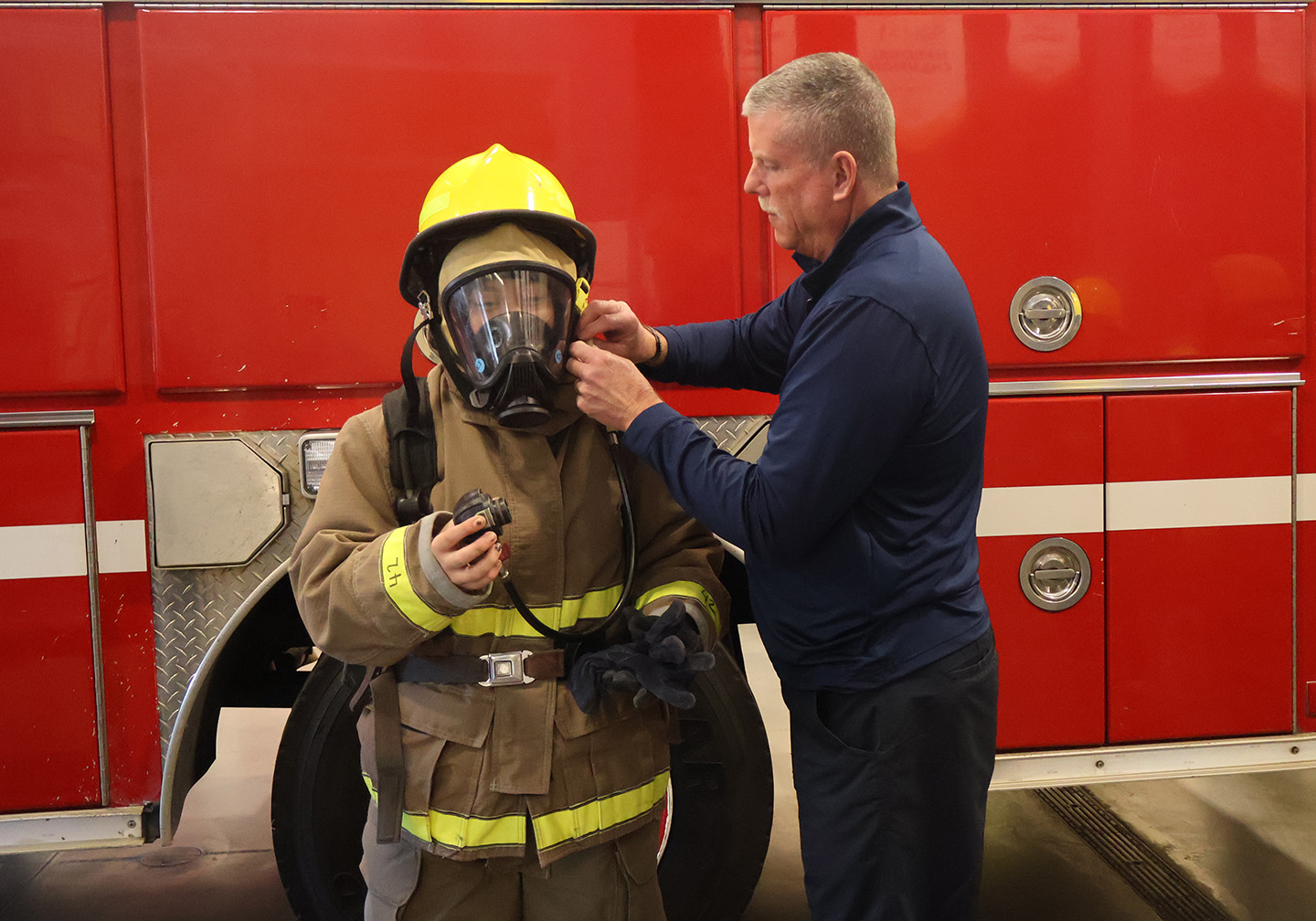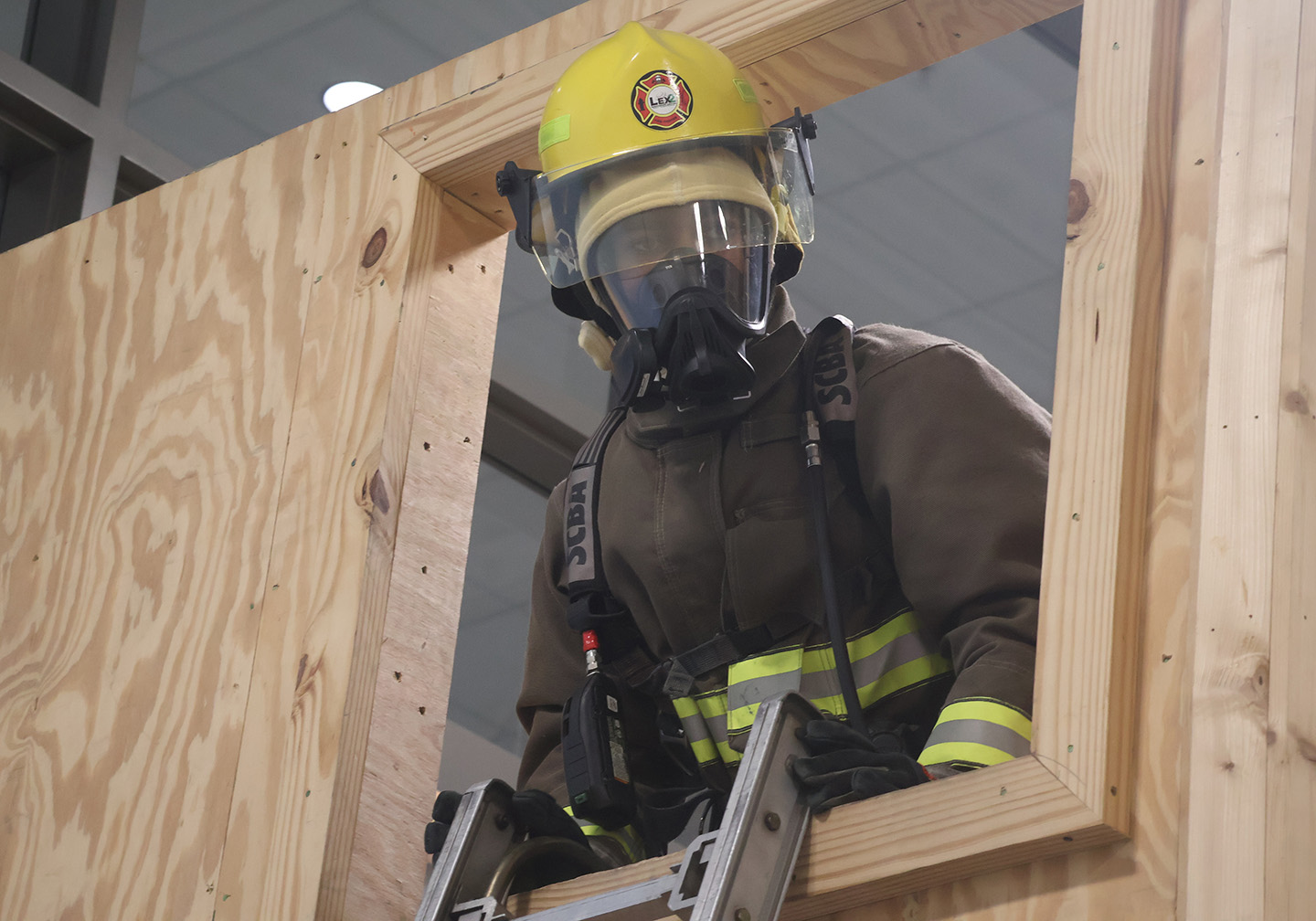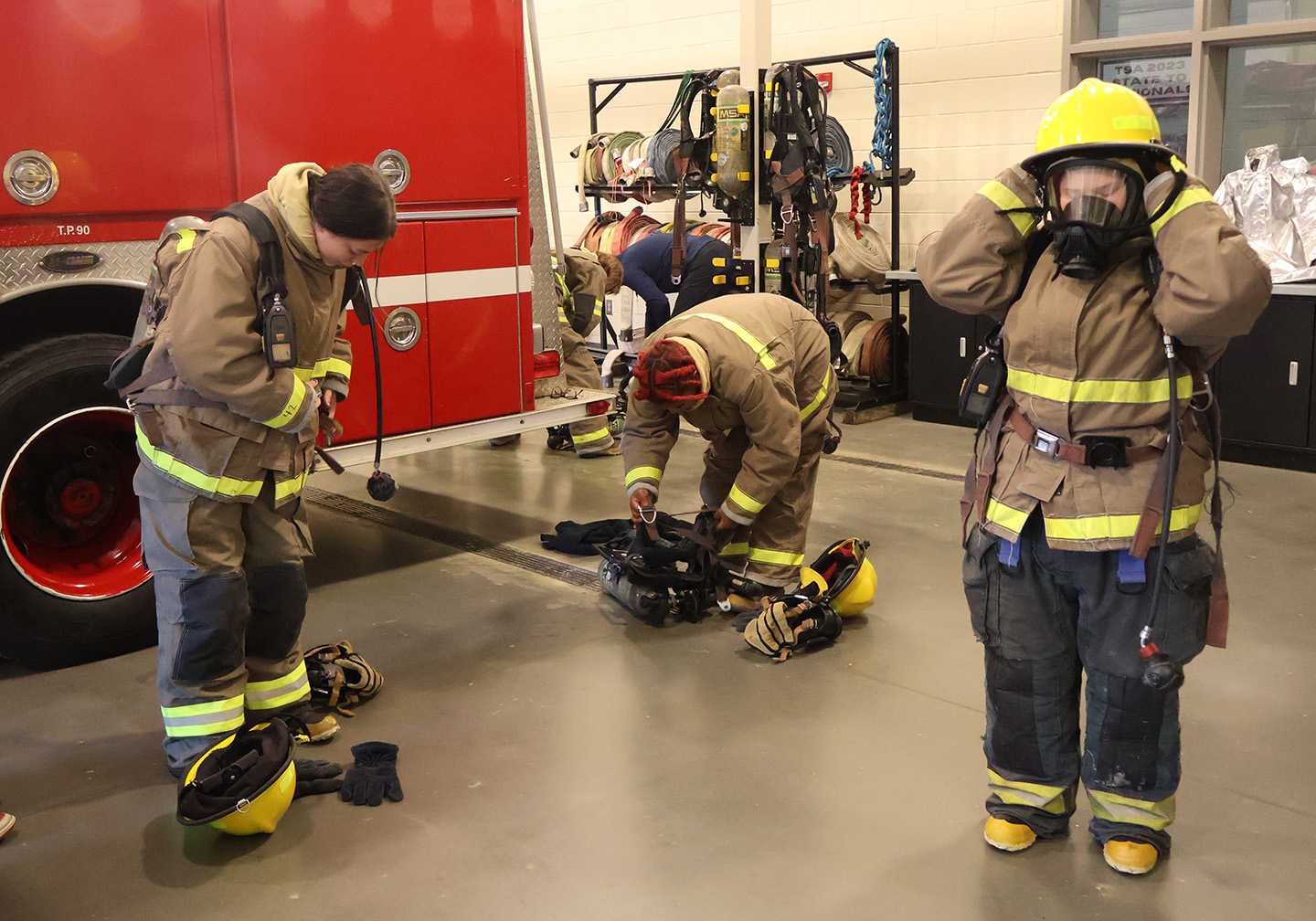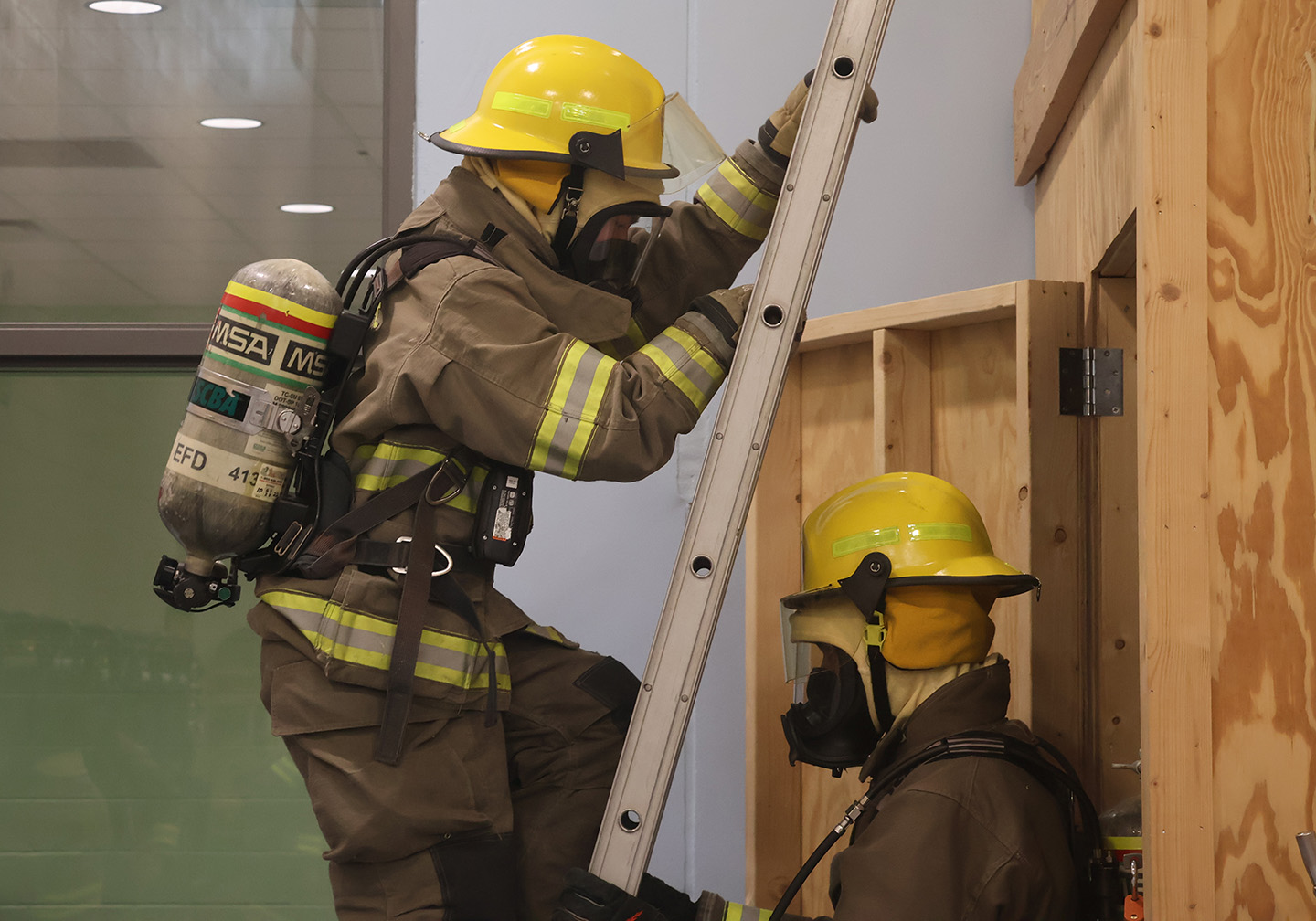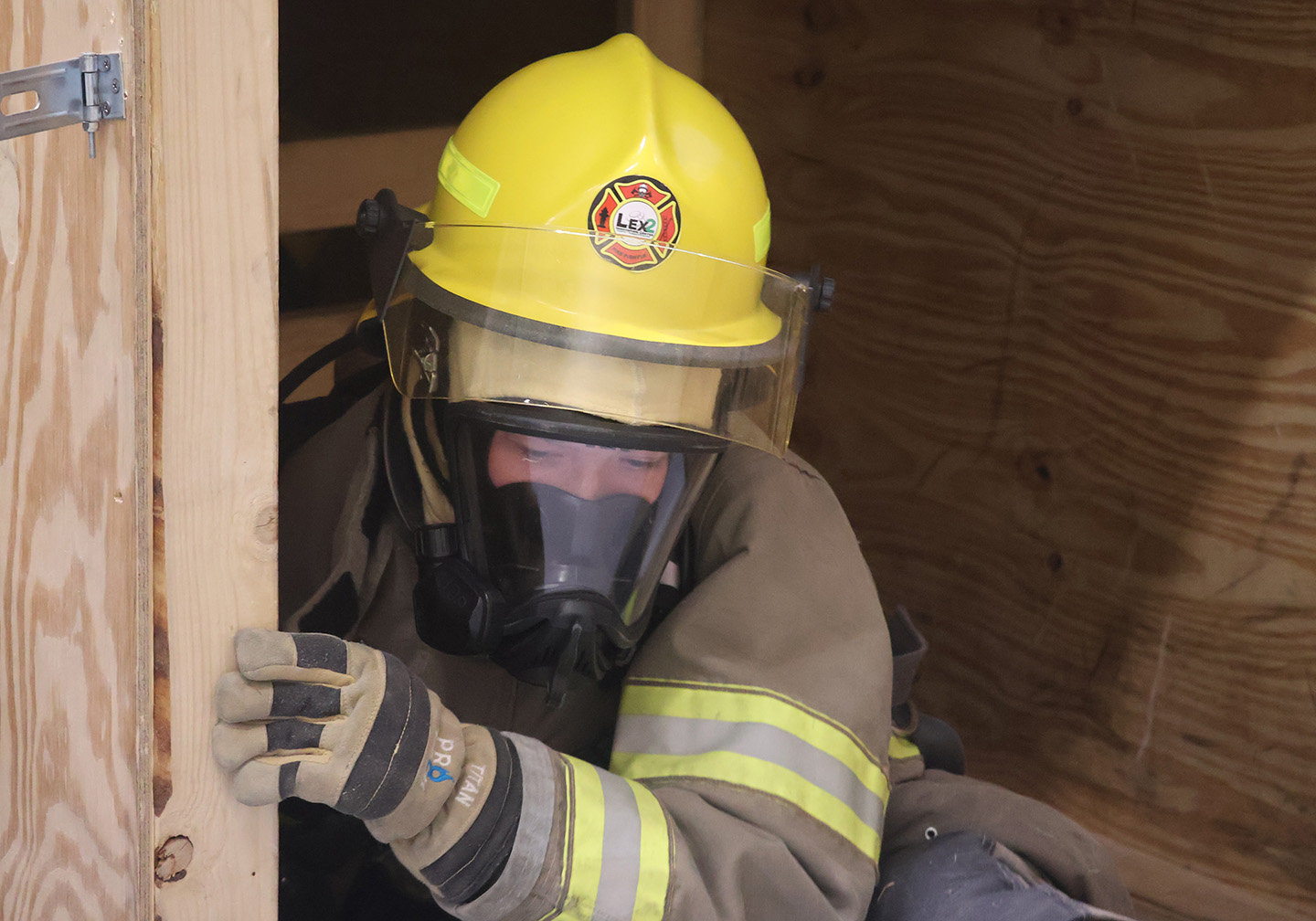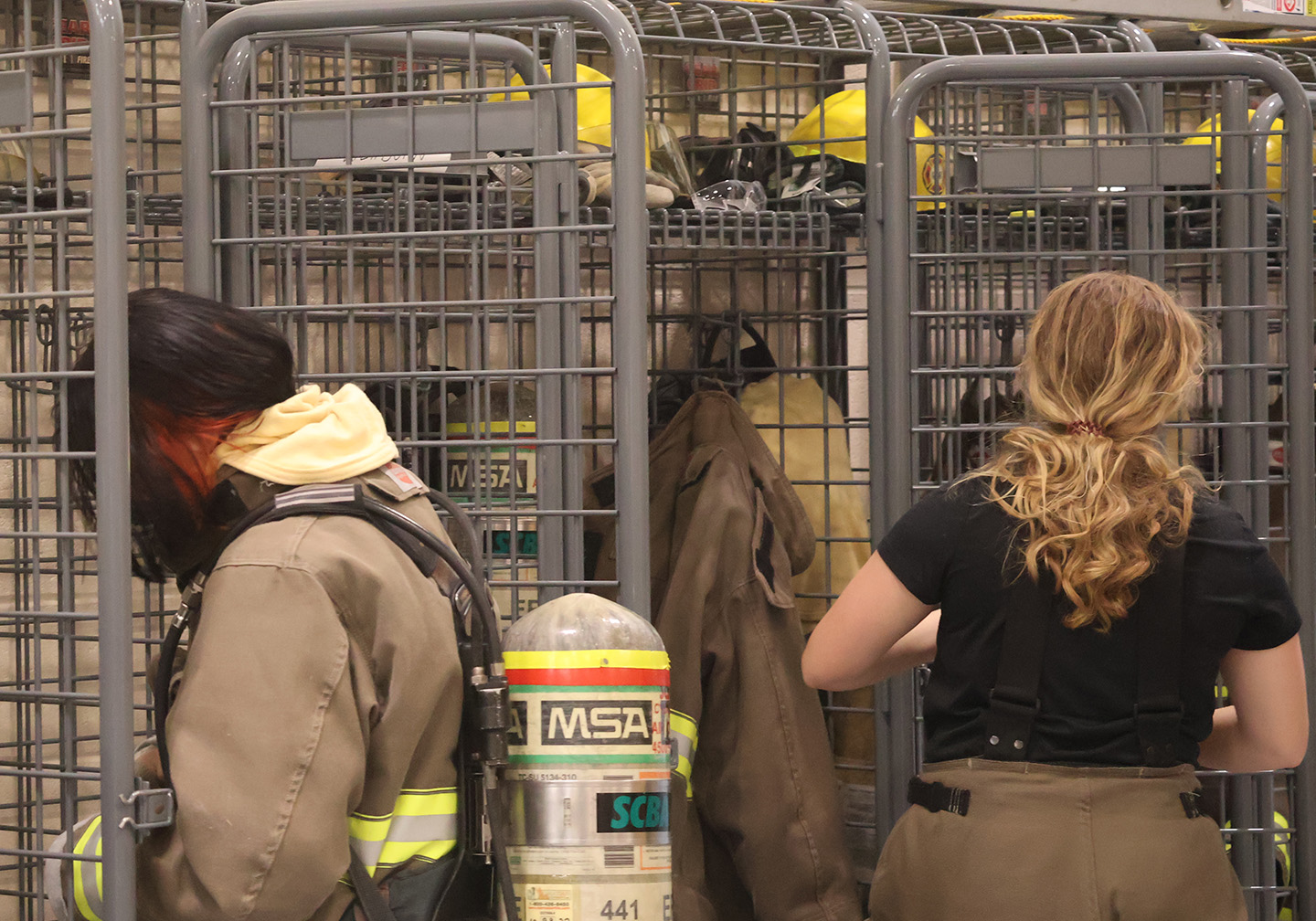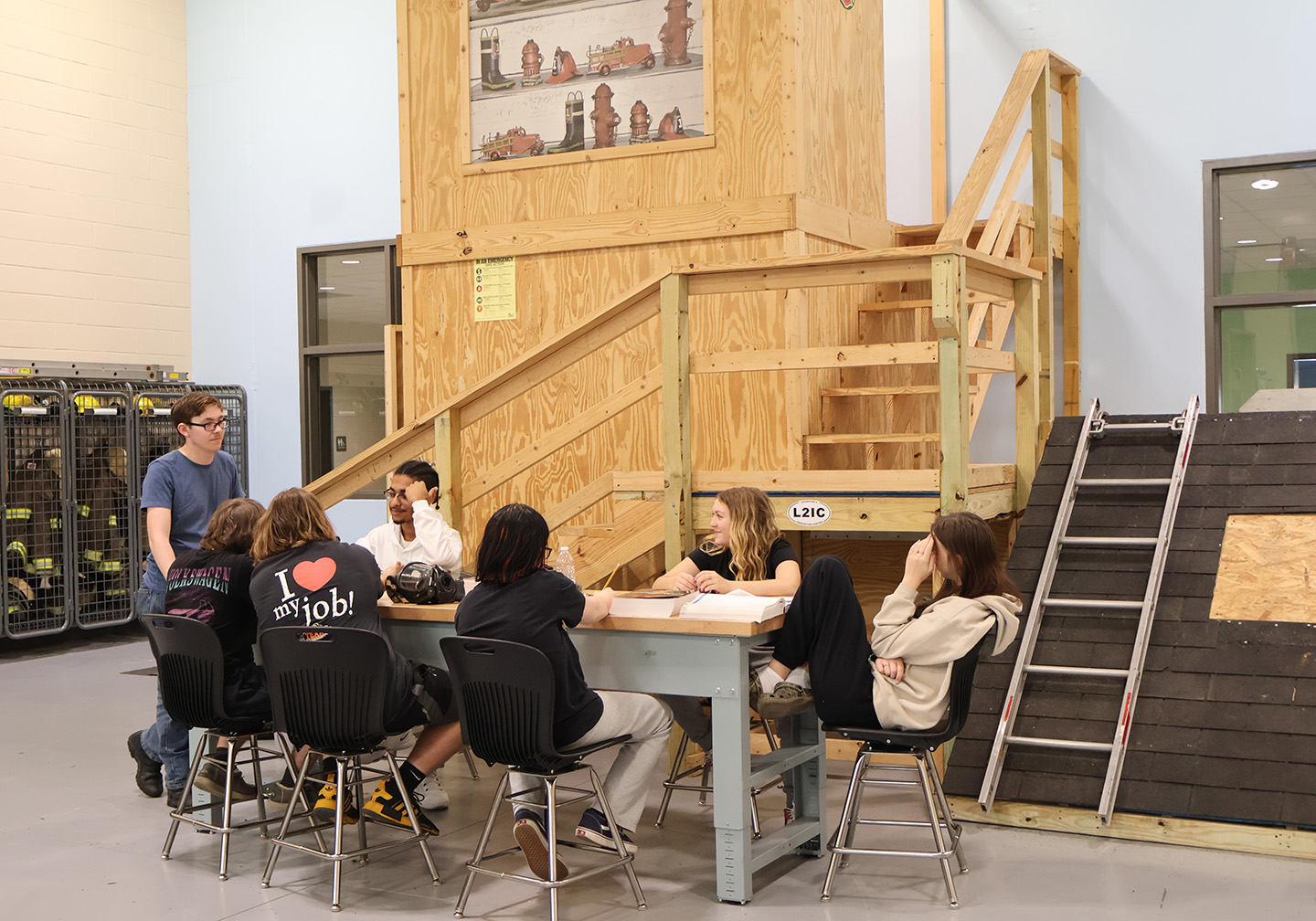Firefighter 2 students at Lexington School District Two’s Innovation Center practice a maze drill in full gear. (Photo by Madelyn Weston/Carolina News and Reporter)
He saw the smoke from 3 miles away.
Fire poured out of the old house’s windows.
Fire Chief Edwin Riley jumped from the firetruck and set the hoses in place. He circled the scene to check for safety hazards while his partner operated the water pump.
The firefighters inside the home needed someone to relieve them quickly. A volunteer rushed to the scene in his own car but had no equipment. Riley stripped down to his street clothes and socked feet and gave the younger firefighter his gear.
“You just do what you’ve got to do sometimes under the circumstances,” Riley said.
Saluda Town Fire and Rescue has about 20 sets of gear for 130-140 volunteer firefighters, Riley said. The department can’t afford to pay firefighters, and it’s difficult to get funding for equipment, he said.
But pay and equipment aren’t the only issues for S.C. firefighters, particularly in small towns and rural areas. Fire departments more and more are struggling to recruit, increasing the amount of time it takes to get to homes and businesses in an emergency. And now, response times are even more important, since firefighters are so often first on the scene of any tragedy, saving people having heart attacks, suffering drug overdoses and those who’ve been in car accidents.
Recruiting, retention
When it comes to recruiting, if towns can’t afford full-time crews, volunteers fill the void. But fewer people are willing to volunteer now because training takes time and dedication, some fire department chiefs say.
Response times suffer.
In Saluda, it usually takes four and a half minutes to get a truck rolling, Riley said. And it may take 20 minutes for the much-needed firefighters from a neighboring department also to get to the scene.
There are 440 registered fire departments in South Carolina, 52.9% of them entirely volunteer, according to the U.S. Fire Administration.
About 65% of the state’s firefighters are volunteers, said Jason Pope, the superintendent of the S.C. Fire Academy, which trains the state’s firefighters.
Full-time or volunteer, firefighters just aren’t sticking around.
Recruiting programs bring in more people, but they don’t stay past five years, he said.
“You never want to be short on staffing because that puts other people’s lives in danger,” said retired Capt. Michael Greer. “Not only your brother firefighters, but it keeps the community in danger.”
Greer served with the Irmo Fire Department for 25 years and now teaches the fire and rescue program at Lexington-Richland School District Five.
The Irmo Fire Department, northwest of the city of Columbia, is like a family, said Assistant Chief of Operations Sloane Valentino. It aims to be a destination department instead of a stepping stone, he said.
Some firefighters drive more than 100 miles to work, passing other departments along the way, because they enjoy the culture in Irmo.
Rural and volunteering
The Fairfield County Fire Department, north of Richland County, has 95 firefighters, including nine staff, but it wants twice as many, said Fire Chief Jamie Webb.
Its average response time is 14 minutes, almost double Columbia’s and Richland County’s average.
Fairfield has 15 stations, but only six operate during normal work hours, because there are too few career firefighters. At other times, volunteers, many of whom have full-time jobs, take over at all stations.
Rural areas may have lower call volumes, said Pope, formerly a fire chief in Fairfield. But response time is a challenge because many rural communities cover more ground.
“A lot of your rural communities rely solely on volunteer firefighters, and it is getting harder to retain them,” Pope said.
The Kershaw County Fire Department transitioned from a volunteer department to funding 24 full-time staffers in 2019. It still heavily relies on volunteers, said Fire Chief Will Glover. But employing firefighters reduces response times. It also reduces the travel time volunteers face when leaving work or home.
“With a volunteer department, you never know who’s going to be around to answer the call,” Glover said.
Serving medical needs
The West Columbia Fire Department is fully staffed with 29 career firefighters with an average response time of 5.5 minutes, said Fire Chief Marquis Solomon.
“(Patients) are able to get their care a lot faster,” Capt. Tyler Lund said.
A quick response time is important to give patients a better chance of survival, Lund said.
Cardiac arrest can be fatal in eight minutes, and brain damage can occur after five, according to the Cleveland Clinic.
West Columbia is the only fire department in the Midlands that requires firefighters have an EMT certification, following a national trend. Some firefighters also have a more specialized paramedic certification.
A majority of the calls at the combined Columbia-Richland Fire Department are medical, said Christopher Kip, assistant chief of professional service. There are 450 firefighters but 60 vacancies, and the volunteer program has decreased. Volunteers don’t want to leave their career job and take the pay cut to become a professional firefighter, he said.
“Firefighting is a difficult thing for people to work into their lives because it takes a lot of time, and people don’t typically have that kind of time and because of work and family obligations,” Kip said. “What sets volunteer firefighters apart from any other human being is their heart to serve.”
The department has attended job fairs and visited schools to recruit, Kip said.
He hopes local high school programs will draw students to fire service as a career.
Cross-training firefighters as medical responders should help fill gaps as well.
“Richland County EMS has limited resources,” Kip said. “So the fire service has, nationwide, has taken on training firefighters … in how to take care of any potentially life threatening injury.”
Capt. Tyler Lund, left, prepares to take a call for a lift assist with firefighter paramedic J’quan Allen, right. (Photo by Madelyn Weston/Carolina News and Reporter)
Driver Evan Hovis gears up for a call in Irmo Fire Department’s tiller, or bender, which was bought this year. A tiller is steered from the front and back to navigate small streets. The firefighters will switch seats to learn each role. (Photo by Madelyn Weston/Carolina News and Reporter)
S.C. Fire Academy Superintendent Jason Pope is hopeful high school programs will raise a new generation of firefighters to fill vacancies. (Video by Madelyn Weston/Carolina News and Reporter)
High school programs help students find passion in firefighting
Lexington School District Two and Lexington-Richland School District Five have fire and rescue programs, inspiring new generations to a career in firefighting. Students earn the International Fire Service Accreditation Congress certification if they pass the S.C. Fire Academy’s skills test. Lex-Rich Five instructor retired Capt. Mike Greer said the fire department saved his life, and his favorite part is showing the kids his passion for the job. (Photos by Madelyn Weston/Carolina News and Reporter)

